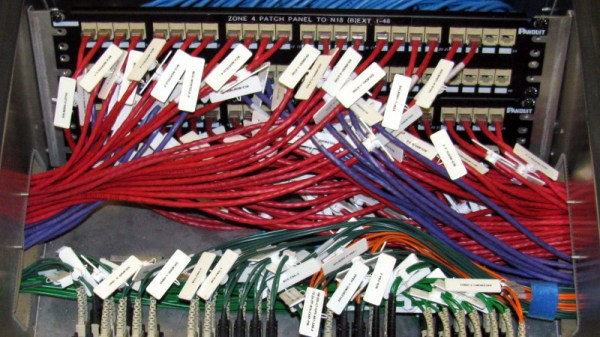A joke in networking circles is that the switch from IPv4 to IPv6 is always a few years away. Although IPv6 was introduced in the early 90s as a result of the feared imminent IPv4 address drought courtesy of the blossoming Internet. Many decades later, [Geoff Huston] in an article on the APNIC blog looks back on these years to try to understand why IPv4 is still a crucial foundation of the modern Internet while IPv6 has barely escaped the need to (futilely) try to tunnel via an IPv4-centric Internet. According to a straight extrapolation by [Geoff], it would take approximately two more decades for IPv6 to truly take over from its predecessor.
Although these days a significant part of the Internet is reachable via IPv6 and IPv6 support comes standard in any modern mainstream operating system, for some reason the ‘IPv4 address pool exhaustion’ apocalypse hasn’t happened (yet). Perhaps ironically, this might as [Geoff] postulates be a consequence of a lack of planning and pushing of IPv6 in the 1990s, with the rise of mobile devices and their use of non-packet-based 3G throwing a massive spanner in the works. These days we are using a contrived combination of TLS Server Name Indication (SNI), DNS and Network Address Translation (NAT) to provide layers upon layers of routing on top of IPv4 within a content-centric Internet (as with e.g. content distribution networks, or CDNs).
While the average person’s Internet connection is likely to have both an IPv4 and IPv6 address assigned to it, there’s a good chance that only the latter is a true Internet IP, while the former is just the address behind the ISP’s CG-NAT (carrier-grade NAT), breaking a significant part of (peer to peer) software and services that relied on being able to traverse an IPv4 Internet via perhaps a firewall forwarding rule. This has now in a way left both the IPv4 and IPv6 sides of the Internet broken in their own special way compared to how they were envisioned to function.
Much of this seems to be due to the changes since the 1990s in how the Internet got used, with IP-based addressing of less importance, while giants like Cloudflare, AWS, etc. have now largely become ‘the Internet’. If this is the path that we’ll stay on, then IPv6 truly may never take over from IPv4, as we will transition to something entirely else. Whether this will be something akin to the pre-WWW ‘internet’ of CompuServe and kin, or something else will be an exciting revelation over the coming years and decades.
Header: Robert.Harker [CC BY-SA 3.0].


















